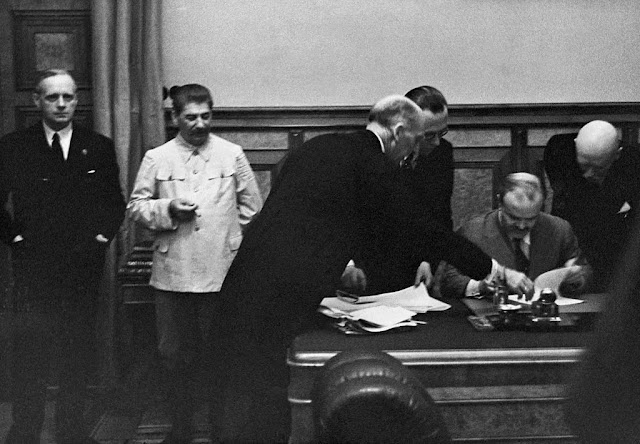As the countdown to war continued, the events of August 23, 1939, revealed the fractured state of international diplomacy and the mounting ambitions of authoritarian regimes. From tense meetings in Obersalzberg to secret agreements in Moscow, the world teetered closer to catastrophe.
Obersalzberg, Germany: A British Ambassador Faces Hitler
At Hitler’s secluded mountain retreat in Obersalzberg, British Ambassador Nevile Henderson arrived bearing a letter from Prime Minister Neville Chamberlain. The message sought to preserve fragile peace between Britain and Germany, but Hitler’s mood made the task near impossible.
Henderson endured hours of waiting before finally facing the Führer, who unleashed a torrent of anger. Hitler denounced the Polish government for what he called their “intransigence” and lambasted Britain for providing Poland with a so-called “blank cheque” of support. Yet, despite the fury, Hitler claimed he desired only friendship with Britain.
Dismissed after the stormy exchange, Henderson was summoned back shortly thereafter to receive Hitler’s written response to Chamberlain’s letter. During their second meeting, Hitler appeared calmer but made his intentions unmistakably clear. At 50 years old, he asserted his preference for an immediate war rather than delaying conflict for five or ten years. Only a complete reversal of British policy, he declared, would convince him of Britain’s sincerity.
Behind closed doors, Hitler’s tone shifted once more. Feigning fury for the ambassador, he later joked with his staff about Chamberlain’s supposed frailty, predicting the British Prime Minister would not survive the strain of their diplomatic exchanges. Hitler’s calculated theatrics underscored his manipulation of diplomacy to serve his aggressive agenda.
Moscow, Russia: The Molotov-Ribbentrop Pact
In a pivotal moment of pre-war diplomacy, German Foreign Minister Joachim von Ribbentrop and Soviet Foreign Minister Vyacheslav Molotov signed the Molotov-Ribbentrop Pact in Moscow. Publicly, the agreement pledged mutual non-aggression between Nazi Germany and the Soviet Union, ensuring neither would attack the other or support third-party aggressors.
However, concealed within the agreement were secret protocols dividing Eastern Europe into spheres of influence. Poland, Finland, Romania, and the Baltic States were partitioned between the two powers, laying the groundwork for territorial conquests. These clandestine arrangements would remain hidden until the war’s end, when the true extent of the pact’s betrayal became evident.
The Molotov-Ribbentrop Pact shocked the world, undermining trust in both nations and fundamentally altering the balance of power in Eastern Europe. While the public narrative centered on peace, the hidden clauses revealed the pact as a cynical blueprint for expansion and domination.
Free City of Danzig: Nazi Control Tightens
In the Free City of Danzig, Albert Forster, a fervent Nazi loyalist, was appointed as the new head of state by the city’s Senate. Forster, a Bavarian-born Gauleiter, was known for his deep-seated antisemitism and unwavering loyalty to Hitler. His appointment signaled an intensification of Nazi influence in the region.
Forster’s ambitions extended beyond Danzig, as he openly advocated for the annexation of Polish territories and the expulsion of Polish citizens. As tensions surrounding Danzig reached a boiling point, Forster’s role in escalating the crisis became increasingly evident. His leadership contributed to the region’s destabilization, further fueling the drive toward war.
London, England: Safeguarding History
Amid rising fears of an impending conflict, the British Office of Works initiated plans to safeguard national treasures. The Imperial War Museum began the meticulous evacuation of its most valuable contents, ensuring that vital artifacts and historical records would survive the potential destruction of war.
This effort was emblematic of Britain’s dual focus on preparing for the practicalities of war while preserving its cultural heritage. In the face of mounting uncertainty, such actions highlighted the importance of protecting the past even as the present unraveled.
Brussels, Belgium: A Plea for Peace
In a moment of unity, King Leopold of Belgium convened foreign ministers from neutral European nations—Belgium, Denmark, Finland, Luxembourg, the Netherlands, Norway, and Sweden—to discuss the escalating crisis. Following their conference in Brussels, the King delivered a heartfelt public appeal for peace.
Urging open negotiations and dialogue, King Leopold called on all nations to seek reconciliation rather than conflict. His message reflected the hope of smaller nations for a diplomatic resolution to the crisis, even as the great powers moved inexorably toward war.
A World Poised on the Edge
These interconnected events brought the world another step closer to the abyss. Diplomacy faltered, ambitions hardened, and the last flickers of hope for peace dimmed. The stage was set for the most destructive conflict in human history.
